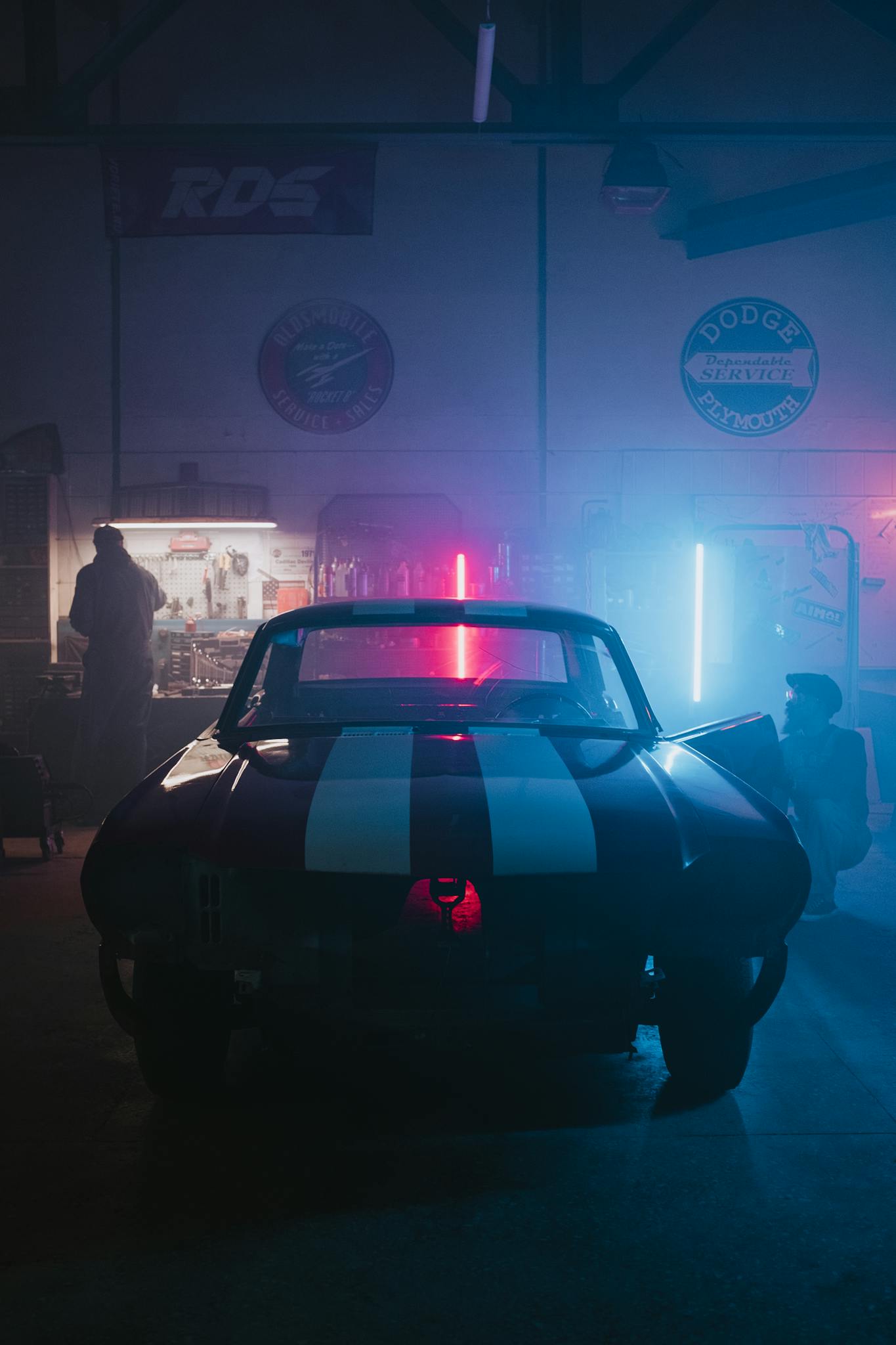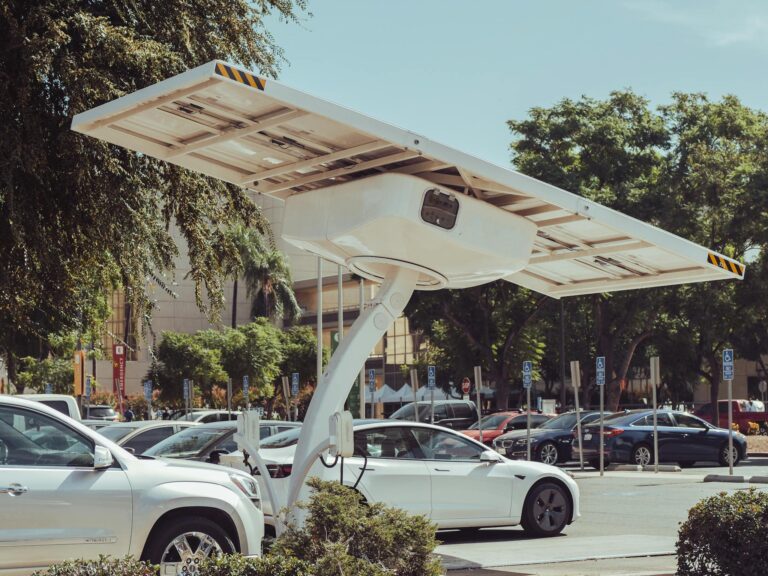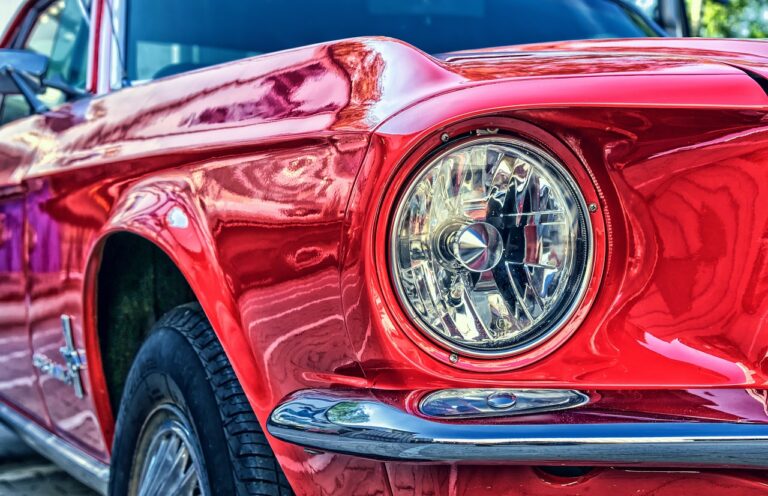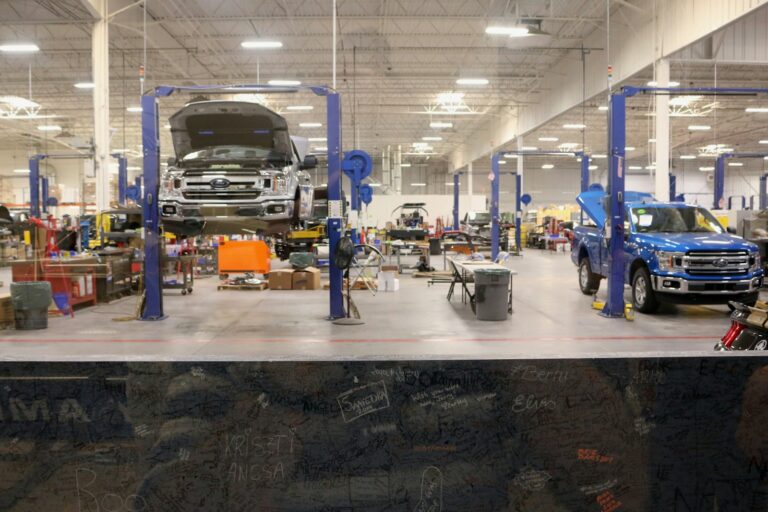From Rust to Riches: Ultimate Classic Car Restoration Guide
Every classic car tells a story, and breathing new life into a vintage automobile is one of the most rewarding experiences in automotive culture. Whether you’re staring at a barn find covered in decades of dust or inheriting a family treasure that’s seen better days, the journey from rust bucket to show-stopper requires more than just enthusiasm – it demands careful planning, technical knowledge, and a strategic approach. In this comprehensive guide, we’ll walk you through the essential steps of classic car restoration, from initial assessment to investment protection, helping you transform your project car into a valuable piece of automotive history.
- Project Scope: Comprehensive restoration guide
- Target Audience: Beginner to intermediate restorers
- Time Frame: 6-24 months typical completion
- Investment Range: $10,000-$50,000+
- Key Outcomes: Restored classic car with maximized value
- Essential Tools: Basic to advanced mechanical equipment
- Skill Level: Moderate to advanced
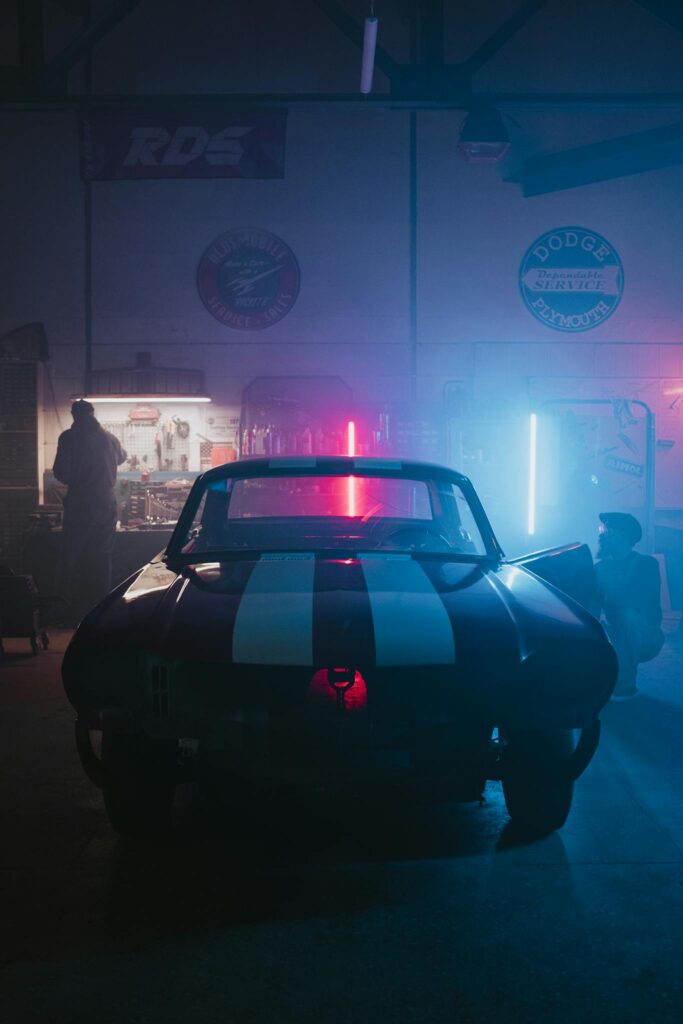
From Rust to Riches: Ultimate Classic Car Restoration Guide
Classic car restoration is more than just a hobby – it’s an art form that requires patience, skill, and meticulous attention to detail. Whether you’re eyeing that barn-find 1965 Mustang or inheriting grandpa’s forgotten Chevrolet, this comprehensive guide will walk you through the essential first steps of your restoration journey.
- Difficulty Level: Advanced
- Time Investment: 6-24 months
- Budget Range: $10,000-$50,000+
- Key Skills: Mechanical knowledge, bodywork, patience
- Tools Needed: Comprehensive mechanic’s set, specialty restoration tools
- Best For: Dedicated enthusiasts and serious collectors
Initial Assessment and Project Planning
Before diving into your restoration project, taking time for proper assessment and planning can mean the difference between a successful rebuild and a costly nightmare. Your first step is to approach the project with clear eyes and realistic expectations.
Evaluating Your Classic Car’s Condition
Start with a thorough inspection of your vehicle’s condition. Document everything using a detailed checklist and photographs. Pay special attention to:
- Structural integrity of the frame and chassis
- Extent of rust and corrosion
- Completeness of all components
- Numbers matching verification
- Previous repair attempts
- Interior condition
- Mechanical systems status
Pro Tip: Create a digital folder with dated photos of every angle and component. These will prove invaluable during reassembly and for documentation purposes.
Setting a Realistic Budget and Timeline
Restoration projects notoriously exceed initial estimates. Based on our experience at CarsInsiders.com, we recommend:
- Multiply your initial budget estimate by 1.5
- Add 30% more time than you think you’ll need
- Factor in storage costs during restoration
- Include costs for specialty tools and equipment
- Budget for unexpected parts replacement
- Consider professional help for specialized tasks
Essential Tools and Workshop Setup
Your workspace can make or break your restoration project. A well-organized workshop should include:
- Sufficient lighting (minimum 1,000 lumens)
- Ventilation system
- Lift or stable jack stands
- Comprehensive tool set
- Parts cleaning station
- Dedicated storage area
- Fire safety equipment
- First aid kit
Documentation and Research Requirements
Before turning your first wrench, gather these essential resources:
- Original factory service manual
- Parts catalogs
- Production numbers and specifications
- Historical documentation
- Previous owner records
- Paint codes and material specifications
- Period-correct reference materials
Remember that proper documentation isn’t just about maintaining authenticity – it’s about preserving and potentially increasing your classic car’s value. As Joseph Chen notes from his experience restoring his 1969 Dodge Charger, “The difference between a $50,000 restoration and a $100,000 restoration often lies in the paperwork.”
By thoroughly addressing these initial planning stages, you’ll set yourself up for a more organized and successful restoration project. In our next section, we’ll dive into the step-by-step restoration process, beginning with proper dismantling techniques and parts cataloging.
The Step-by-Step Restoration Process
The actual restoration work requires a methodical approach and careful attention to detail. This section breaks down the core processes that will transform your classic from a restoration candidate into a show-worthy masterpiece. Remember, proper documentation of each step is crucial for both the restoration process and future value.
Dismantling and Parts Cataloging
The dismantling phase is arguably the most critical stage of your restoration. A well-organized disassembly process saves countless hours and frustration during reassembly.
Essential dismantling tips:
- Create a dedicated clean workspace
- Label all parts immediately upon removal
- Take photos from multiple angles before removing components
- Use clear plastic bags and boxes for small parts
- Create a detailed inventory spreadsheet
- Mark all electrical connections
- Keep bolts and fasteners with their respective parts
Pro Tip: “I always recommend creating assembly diagrams and taking video during disassembly,” says Joseph Chen. “What seems obvious during teardown might be puzzling months later during reassembly.”
Rust Removal and Body Work Fundamentals
Addressing rust and body damage requires patience and the right techniques. Start with:
Surface Assessment:
- Use a magnet to identify body filler
- Tap panels to identify hidden rust
- Check drain holes and common rust points
- Document all rust locations with photos
Rust Removal Process:
- Remove all affected metal
- Clean surrounding areas
- Install patch panels or fabricate replacements
- Treat remaining metal with rust inhibitor
- Prime and seal all repairs
“Remember, rust is like an iceberg,” Chen explains. “What you see on the surface is usually just a fraction of the actual problem.”
Engine Rebuilding Essentials
A proper engine rebuild follows these critical stages:
Documentation Phase:
- Compression test results
- Timing specifications
- Clearance measurements
- Wear patterns
- Photos of all components
Rebuilding Sequence:
- Complete engine removal
- Thorough cleaning and inspection
- Machine work as needed
- Component replacement
- Precise reassembly
- Break-in procedure
Interior Restoration Techniques
Interior restoration requires attention to both aesthetics and authenticity:
Key Considerations:
- Document original materials and patterns
- Source period-correct materials
- Address structural issues first
- Repair or replace padding
- Restore or replace trim pieces
- Maintain original design elements
Restoration Sequence:
- Remove all interior components
- Document electrical connections
- Address rust and floor pan issues
- Repair or replace structural elements
- Install insulation and sound deadening
- Restore or replace upholstery
- Reinstall trim and accessories
Pro Tip: “Always start with a thoroughly cleaned and properly prepared surface,” advises Chen. “The finest upholstery work will fail if installed over rusty or compromised panels.”
Common Restoration Mistakes to Avoid:
- Rushing the disassembly process
- Inadequate parts labeling
- Skipping rust treatment steps
- Using incorrect materials
- Improper tool usage
- Insufficient documentation
- Taking shortcuts on safety components
Remember that quality restoration work takes time. Our experience shows that rushing any of these steps typically leads to costly do-overs or compromised results. In the next section, we’ll explore how to maximize your investment through proper documentation, certification, and market awareness.
Maximizing Your Investment
While the restoration process itself is crucial, understanding how to maximize your investment’s value is equally important. This section explores the financial aspects of classic car restoration and how to protect your investment for years to come.
Understanding Market Values
The classic car market fluctuates based on numerous factors, and staying informed is crucial for making smart investment decisions.
Key Market Indicators:
- Auction results trends
- Generational buying patterns
- Economic conditions
- Rarity factors
- Historical significance
- Original documentation
- Restoration quality
“The key to maximizing value isn’t just about the quality of restoration,” explains Joseph Chen. “It’s about understanding which models are gaining popularity and why.”
Certification and Authentication
Proper certification can significantly impact your classic car’s value:
Documentation Requirements:
- Original VIN verification
- Build sheets
- Factory options list
- Restoration documentation
- Previous ownership history
- Award certificates
- Expert appraisals
Authentication Sources:
- Manufacturer heritage departments
- Classic car clubs
- Marque specialists
- Registry organizations
- Professional authenticators
Professional vs. DIY Cost Analysis
Understanding when to DIY and when to seek professional help is crucial for both budget and value:
DIY Appropriate Tasks:
- Basic maintenance
- Simple mechanical work
- Interior cleaning
- Parts cataloging
- Basic bodywork
- Assembly of components
Professional Services Worth the Investment:
- Engine machining
- Complex electrical work
- Frame straightening
- Paint application
- Upholstery work
- Authentication services
Cost Comparison Example:
Task DIY Cost Professional Cost
Engine Rebuild $3,000 $8,000
Paint Job $2,000 $10,000
Interior Work $1,500 $5,000
Electrical $500 $2,500Insurance and Storage Considerations
Protecting your investment requires proper insurance and storage solutions:
Insurance Requirements:
- Agreed value coverage
- Restoration coverage
- Transportation protection
- Show and event coverage
- Parts and tools coverage
- Workshop liability insurance
Storage Essentials:
- Climate-controlled environment
- Proper ventilation
- Security systems
- Fire protection
- Moisture control
- Regular maintenance schedule
Pro Tip: “Your storage solution should match your investment level,” says Chen. “A $100,000 restoration deserves more than a leaky garage.”
Long-term Value Protection:
- Regular maintenance schedule
- Detailed service records
- Climate-controlled storage
- Limited but regular exercise
- Professional detailing
- Participation in shows
- Continuous documentation
Remember that a restored classic car is both a passion project and an investment. By following proper authentication procedures, making smart decisions about professional services, and maintaining appropriate insurance and storage, you can protect and potentially increase your investment’s value over time. Consider starting a new business to defray costs by restoring cars on the side.
A successful classic car restoration requires careful planning, skilled execution, and smart investment protection. While the process can be challenging and costly, the rewards of a properly restored classic car – both personal and financial – can make it all worthwhile.
Conclusion: Your Restoration Journey Begins
Restoring a classic car is more than just a mechanical undertaking – it’s a journey that combines craftsmanship, historical preservation, and strategic investment. From the initial assessment of a rust-covered prospect to the final details that make your classic shine at car shows, every step requires patience, dedication, and attention to detail. While the process can seem daunting, breaking it down into manageable phases – assessment, restoration, and investment protection – makes the journey more approachable and ultimately more rewarding.
Remember Joseph Chen’s golden rule of restoration: “The difference between a good restoration and a great one isn’t just in the visible results – it’s in the documentation, the attention to authenticity, and the strategic decisions made along the way.” Whether you’re tackling your first project or adding to your collection, the principles outlined in this guide will help you achieve the best possible results while protecting your investment.
As you embark on your own restoration journey, keep in mind that every classic car has a story to tell. Your role as a restorer is not just to repair and rebuild, but to preserve that history for future generations while potentially creating significant value in the process. With proper planning, careful execution, and smart investment protection, your restoration project can transform from a rusty relic into a prized possession that brings joy for years to come.
